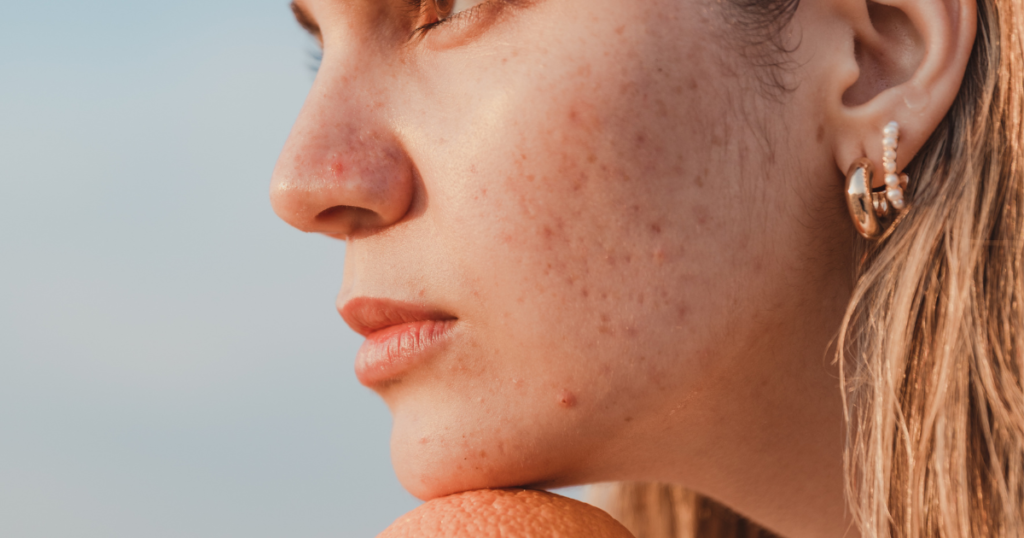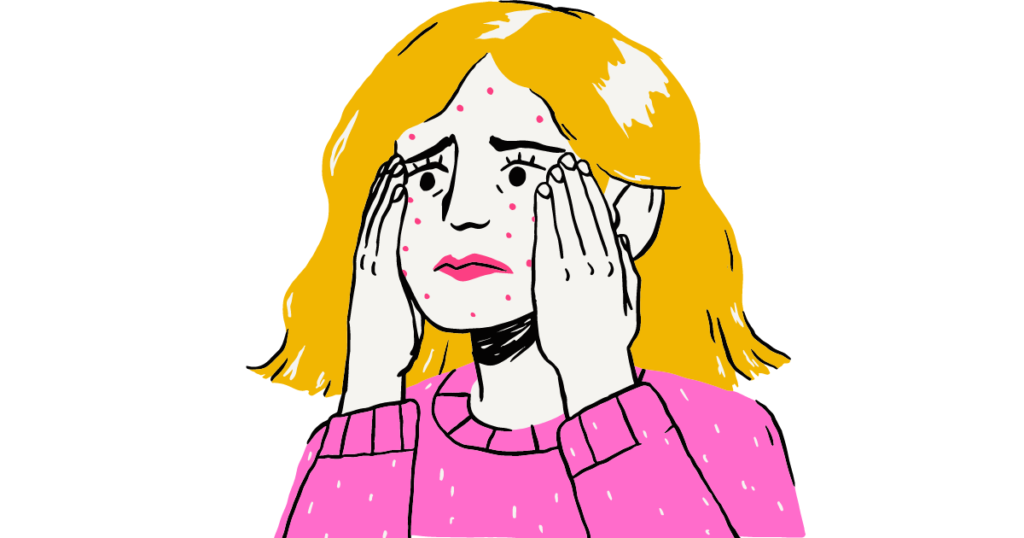The body’s reaction to acne, which can leave noticeable marks or depressions in the skin, results in acne scars.After acne has healed, there may still be visible marks or indentations on the face. They are a result of the body’s innate ability to repair itself after acne-related inflammation and damage. Inflammation of acne leads to acne marks. The pore membrane breaks down, causing the acne pore to swell. Some acne lesions are small, leaving shallow scars that resolve rapidly. Blemishes occasionally leak their contents into the nearby tissue, leaving deeper scars.
Does acne scars go away?
Yes, DIY treatments may help reduce the appearance of mild acne scars, but they are unlikely to make them go away completely. Effective treatment typically requires medical intervention and can include options such as topical creams, laser therapy, and chemical peels. It’s always best to consult with a dermatologist to determine the most appropriate treatment for your individual needs.

What causes acne scarring?
The body’s natural healing process in reaction to the inflammation and damage brought on by acne results in acne scarring. When a cyst or pimple develops, the surrounding tissue may be harmed, leaving a wound that the body will try to repair. Collagen is a protein the body makes during the healing process that aids in repairing injured tissue. Scarring from acne can occur if the body makes too little or too much collagen, though. Picking or squeezing acne lesions, genetics, and inadequate or postponed acne treatment are additional variables that can cause acne scars.

Types of acne scars
There are several types of acne scars, including:
- Ice pick scars are long, slender, pitted scars that mimic the imprints of an ice pick or other sharp object.
- Boxcar scars, which can be shallow or deep, are wide, rectangular-shaped scars with distinct borders.
- Scars that roll—those that are wavy or undulating and give the skin a rippled look.
- Scars that are elevated and thickened are called hypertrophic scars, and they develop because too much collagen is produced during the healing process.
- Atrophic scars are shallow or deep, depressed or sunken marks that result from tissue loss.
Are acne scars permanent?
Some natural remedies and lifestyle changes may help reduce their appearance. These can include using natural products like aloe vera or honey, massaging the scarred area with oil, maintaining a healthy diet and exercise routine, and protecting the skin from the sun. While these remedies may help improve the appearance of acne scars, their effectiveness can vary depending on the severity and type of scarring. In some cases, medical intervention such as laser therapy, chemical peels, or micro-needling may be necessary to achieve significant improvement in the appearance of acne scars.

How long does it take for acne scars to fade?
After acne has healed, there may still be visible marks or indentations on the face. They are a result of the body’s innate ability to repair itself after acne-related inflammation and damage. Inflammation of acne leads to acne marks. The pore membrane breaks down, causing the acne pore to swell. Some acne lesions are small, leaving shallow scars that resolve rapidly. Blemishes occasionally leak their contents into the nearby tissue, leaving deeper scars.
Best DIY for acne scars
Here are 10 additional DIY treatments that can help reduce the appearance of acne scars:
- Turmeric Mask: Turmeric has anti-inflammatory properties that can help reduce redness and swelling. Mix 1 teaspoon of turmeric powder with 1 tablespoon of honey and apply the paste to your face for 10-15 minutes before rinsing off with warm water.
- Tea Tree Oil Spot Treatment: Tea tree oil is a natural antiseptic that can help prevent breakouts and reduce the appearance of acne scars. Dilute a few drops of tea tree oil with a carrier oil, such as coconut or jojoba oil, and apply it directly to your scars with a cotton swab.
- Cucumber Juice and Yogurt Mask: Cucumber juice contains vitamin C and antioxidants that can help brighten and hydrate the skin, while yogurt contains lactic acid that can help exfoliate dead skin cells. Mix equal parts cucumber juice and yogurt and apply the mask to your face for 10-15 minutes before rinsing off with cool water.
- Oatmeal and Honey Mask: Oatmeal is a gentle exfoliant that can help remove dead skin cells and reduce the appearance of acne scars, while honey is a natural moisturizer that can help soothe and heal the skin. Mix 1/2 cup of cooked oatmeal with 1 tablespoon of honey and apply the mask to your face for 10-15 minutes before rinsing off with warm water.
- Rosehip Oil Massage: Rosehip oil contains vitamin A and C, as well as essential fatty acids, which can help promote skin regeneration and reduce the appearance of acne scars. Massage a few drops of rosehip oil into your skin for a few minutes each day.
- Papaya Mask: Papaya contains an enzyme called papain, which can help exfoliate dead skin cells and reduce the appearance of acne scars. Mash 1/2 cup of fresh papaya and apply the mask to your face for 10-15 minutes before rinsing off with warm water.
- Witch Hazel Toner: Witch hazel is a natural astringent that can help tighten and tone the skin, while also reducing inflammation and redness. Apply witch hazel to your face with a cotton ball as a toner.
- Egg White Mask: Egg whites contain protein and collagen, which can help tighten and tone the skin, while also reducing the appearance of acne scars. Beat 1-2 egg whites and apply the mask to your face for 10-15 minutes before rinsing off with warm water.
- Coconut Oil Massage: Coconut oil is a natural moisturizer that can help hydrate and heal the skin, while also reducing the appearance of acne scars. Massage a small amount of coconut oil into your skin for a few minutes each day.
- Baking Soda and Lemon Juice Scrub: Baking soda and lemon juice both have exfoliating properties that can help remove dead skin cells and reduce the appearance of acne scars. Mix 1 tablespoon of baking soda with enough lemon juice to make a paste and gently massage it into your skin for 1-2 minutes before rinsing off with warm water.
